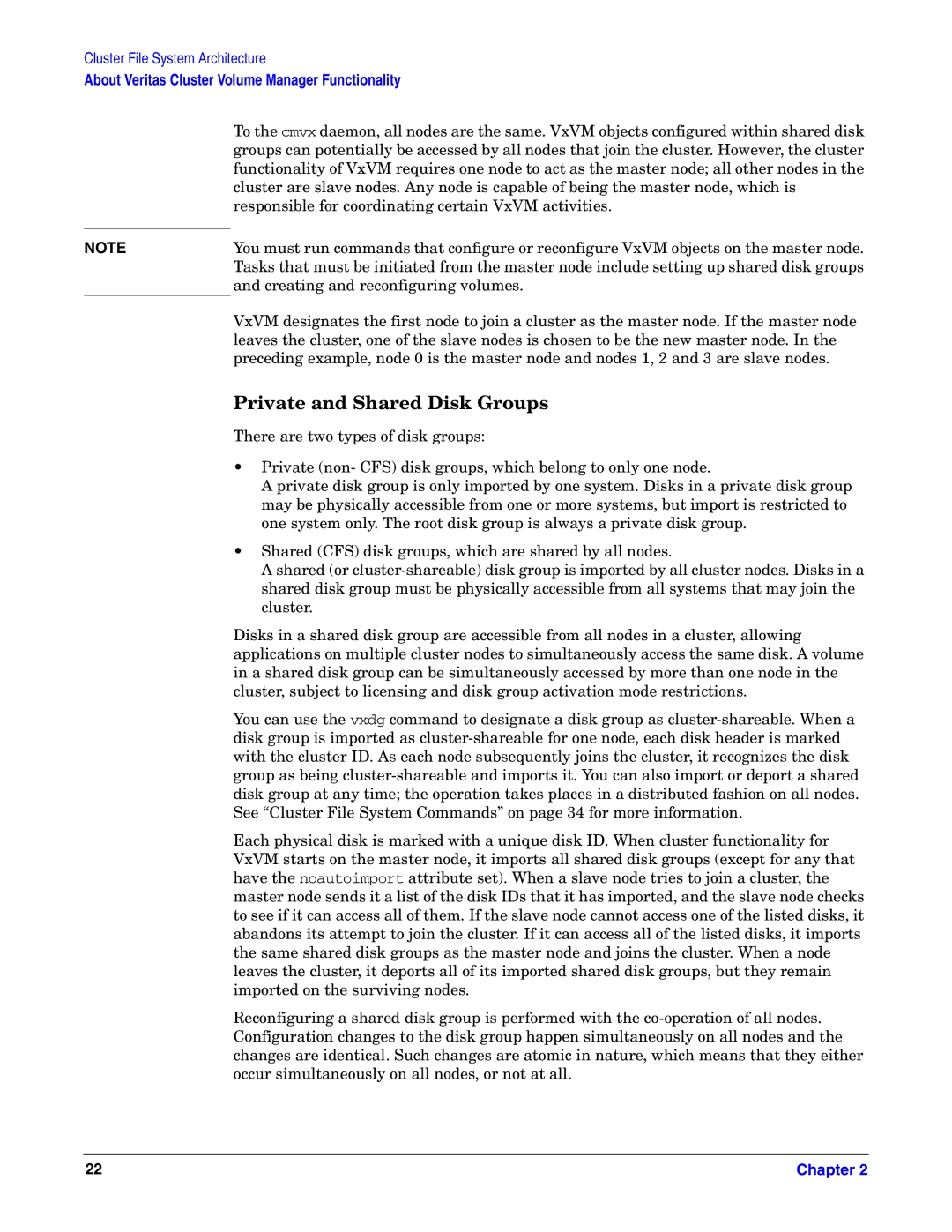Cluster File System Architecture
About Veritas Cluster Volume Manager Functionality
| To the cmvx daemon, all nodes are the same. VxVM objects configured within shared disk |
| groups can potentially be accessed by all nodes that join the cluster. However, the cluster |
| functionality of VxVM requires one node to act as the master node; all other nodes in the |
| cluster are slave nodes. Any node is capable of being the master node, which is |
| responsible for coordinating certain VxVM activities. |
|
|
NOTE | You must run commands that configure or reconfigure VxVM objects on the master node. |
| Tasks that must be initiated from the master node include setting up shared disk groups |
| and creating and reconfiguring volumes. |
| VxVM designates the first node to join a cluster as the master node. If the master node |
| leaves the cluster, one of the slave nodes is chosen to be the new master node. In the |
| preceding example, node 0 is the master node and nodes 1, 2 and 3 are slave nodes. |
Private and Shared Disk Groups
There are two types of disk groups:
• Private (non- CFS) disk groups, which belong to only one node.
A private disk group is only imported by one system. Disks in a private disk group may be physically accessible from one or more systems, but import is restricted to one system only. The root disk group is always a private disk group.
• Shared (CFS) disk groups, which are shared by all nodes.
A shared (or
Disks in a shared disk group are accessible from all nodes in a cluster, allowing applications on multiple cluster nodes to simultaneously access the same disk. A volume in a shared disk group can be simultaneously accessed by more than one node in the cluster, subject to licensing and disk group activation mode restrictions.
You can use the vxdg command to designate a disk group as
Each physical disk is marked with a unique disk ID. When cluster functionality for VxVM starts on the master node, it imports all shared disk groups (except for any that have the noautoimport attribute set). When a slave node tries to join a cluster, the master node sends it a list of the disk IDs that it has imported, and the slave node checks to see if it can access all of them. If the slave node cannot access one of the listed disks, it abandons its attempt to join the cluster. If it can access all of the listed disks, it imports the same shared disk groups as the master node and joins the cluster. When a node leaves the cluster, it deports all of its imported shared disk groups, but they remain imported on the surviving nodes.
Reconfiguring a shared disk group is performed with the
22 | Chapter 2 |
